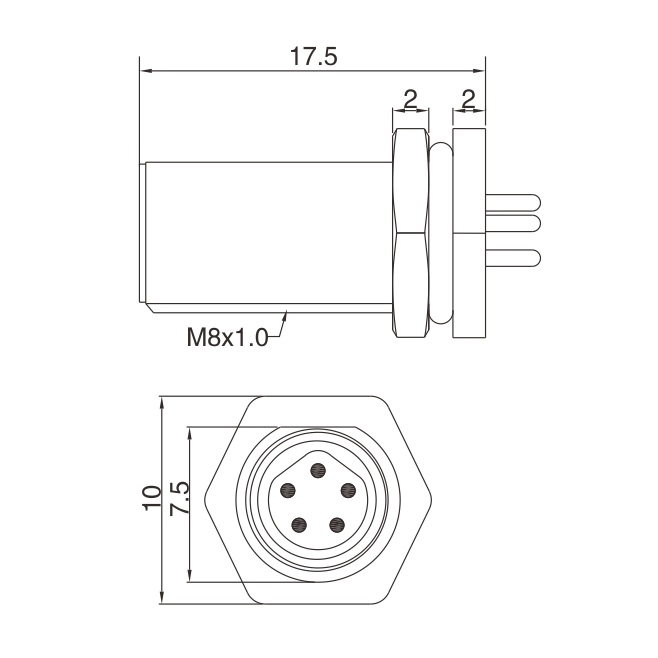Did you know that your daily practices are costing you your circular connectors’ life? If you have spent your hard-earned money on your connectors, you want them to last long.But how will you do so? Well, lucky for you, we have compiled 6 maintenance practices recommended by top manufacturers that will ensure your connectors last the test of time. Shall we have a look?1. Always Perform A Routine InspectionNo matter how good your circular connectors are, continuous use will cause some wear and tear. This is why you need to perform a routine inspection on your connectors. And hey, don't rely on your memory; create a schedule for a routine inspection.You should regularly inspect your connectors for any visible damage signs, and see if they have any cracks, breaks, or corrosion so that you can nip the evil in the bud. You also want to check your connectors’ pins and sockets. If they are bent, misaligned, or damaged, it’s time to replace them.2. Try To Avoid Over-MatingIf you are repeatedly connecting and disconnecting your connectors more than what is necessary, heads up, you’re over-mating your connectors. This will cause premature damage to your circular connectors and, in return, reduce their performance. Don’t get it? Let us explain.Whenever you mate and unmate a connector, a small amount of mechanical stress and friction is placed on the connector's contacts. This will reduce your connector’s lifecycle in the long run, so follow the manufacturer's guidelines on how to mate and unmate safely.3. Avoid Going Over CurrentLike every other thing, your connector has a maximum tolerance for current. This is called the current rating, which represents the highest electric current level it can safely handle.If your connectors are subjected to currents higher than this rating, you risk overheating, contact damage, and sometimes even connector failure. Here are a few ways how you can avoid these issues:● Before choosing a connector, check with your manufacturer and select the one that fits your application.● Regularly monitor current levels to ensure they don't exceed your connector’s maximum limit.● Use fuses or circuit breakers to prevent excessive current from reaching your connectors.4. Regularly Remove Dirt And DebrisNow you might think what harm can a few dust particles do, but, in the long run, these can interfere with the electrical connection of your circular connectors. If you’re experiencing signal degradation, these tiny friends could be the reason. So, regularly inspect your connectors for dirt and debris and remove it using a suitable tool.Ready to clean your connectors? Follow these steps:● You can use compressed air to blow away loose dirt and debris particles by holding the connector at an angle.● Use a soft brush to dislodge stubborn contaminants.● Allow your circular connectors to air dry completely before putting them to use again.5. Adjust According To Your EnvironmentIs your application in an industrial setting or outdoor installation? If yes, they need extra care because these areas face extreme environmental conditions. You wouldn’t even notice that various environmental factors, like temperature, humidity, etc., will wear out your connectors slowly.If you’re still confused, these benefits will help you make a choice:● Humidity: By monitoring humidity levels, you can maintain optimal moisture levels for your connectors to protect them from corrosion and ensure reliable electrical connections.● Temperature: By monitoring temperature, you can identify if your connectors are overheating, face thermal stress, or are undergoing cold-induced brittleness.● Vibrations: If you keep an eye on the vibration levels of your circular connectors, you can easily detect if mechanical stress is affecting their performance in any way.6. Keep Labels And Documents HandyIf you have a huge industrial setup, keeping track of maintenance would be a nightmare for you. You have no idea how easy your maintenance and inspection will become once you start labelling all of your connectors. These 3 labelling and documentation points are any manufacturer’s holy grail; have a look!● Labelling: Each of your circular connectors should be clearly labelled with relevant information such as its type, model number, serial number, and other important details.● Documentation: Start maintaining detailed documentation of each circular connector you own. This will include information such as its installation date, application or system it's used in, maintenance schedule, and any modifications or repairs performed.● Usage Tracking: Additionally, you can record the usage pattern of your connectors, such as the number of mating and unmating cycles, duration of operation, and so on.Here’s The CatchSo we found out that by doing simple things like regular checks and regular cleaning, you can avoid huge problems like damage or corrosion. You should follow the above-mentioned tips but also choose a reliable manufacturer who does quality work.We recommend APTEK because they also offer custom circular connectors made to meet your work conditions. The result? Durable and high-performance connectors! Sounds like what you were looking for? Look them up right now!
Read More>>


